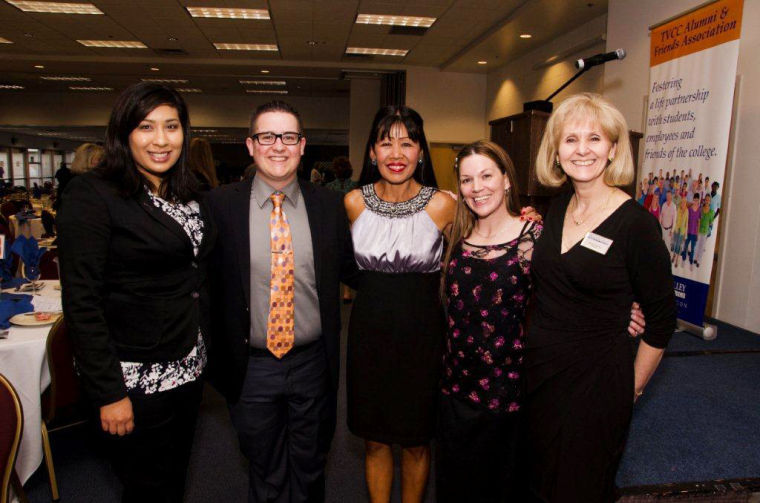 |
| Dr. Sheila Ortego at opening of Unicopia* |
Oh, I liked this one much better! First of all, Dr. Sheila Ortego had a much better handshake then Monday's presenter. (My Dad taught me about handshakes when I was in sixth grade and I have a habit of judging people by the strength and tone of that haptic message.) It was firm and warm.
Here are the other reasons I both enjoyed her presentation and think she'd be a good fit for the institution.
- Like Monday's speaker, she spoke without notes and had strong immediacy behaviors, including eye contact and ready smiles for the questions.
- She sold herself well with a clear articulation of her background and appropriate flattery for the audience. Her background includes working her way up from English teacher to college president at Santa Fe Community College where she spent 30 years as well as some time as an accreditation "fixer" at Pima Community College. During her years at SFCC she also toured the country learning about accreditation as she lead the college through several important upgrades in status, quality and Moody's bond ratings. In other words, I found her background and her straightforward presentation of it quite impressive. While selling her own accomplishments, she also spoke about COCC as a "gem" that didn't seem to need "fixing." She emphasized how the college was recognized as a high-quality institution.
- She believes in an open-door policy and pointed toward the many times she's worked with students on college initiatives.
- She also had the courage to be honest about approaching challenges. When asked about what she saw as the problems in the community or college, she talked about OSU leaving the COCC campus, saying that she would want to learn more about why that happened. Then she said that one possible change to COCC might be a de-emphasis of the transfer side and a growth of the professional technical area. I thought this courageous because there are many people here invested in transfer. In fact, back in the day, that was why Boyle and his coterie were so obsessed with everyone having a PhD.
- Her vita and her discussion shows her strong commitment to expanding opportunity for underrepresented populations as well a concern about income inequality. She noted that the outlying campuses have some of the same issues as Santa Fe with the division between the very poor and very wealthy.
- She thought COCC could do better in adapting to the need for Green Energy.
- She shared that she left SFCC for two reasons: a) she was at the top of her game and height of her popularity and success and believes that's the time to leave and b) her mother was old and sick and living on her own and the sister who had been watching the mom was also ill.
- She drives a Prius and has a black lab, so she'd fit into Central Oregon.
Now I hadn't done any web research on Ortego until just now, this morning, as I am writing this post. And of course, now that I've googled around I feel like I need to share something. Santa Fe Community College is currently embroiled in a huge flap about the termination of Ana “Cha” Guzmán, hired as SFCC president after Oretego retired in 2012. Guzman claims she was terminated because she blew the whistle on a culture of financial mismanagement and insider deals and those fighting her claim she was a bully who made racist remarks and created a negative climate on campus. I think that the largest issue for our current candidate would be Guzman's claims that there was a history of financial mismanagement at SFCC.
* Also in picture, on left, is Randy Grissom, Director of the Sustainable Technologies Center, and on right is Bill Althouse, Althouse, Inc., Energy Specialist. Scene is opening of Unicopia, Emerald Center, A National Educational Center of Excellence for Renewable Energy and Sustainability. Grissom is currently interim president of Santa Fe Community College while the Guzman issue is moving through the courts.











